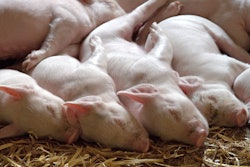USDA Crop Conditions Report
- Corn crop conditions slipped to 71% good to excellent from 75% last week.
- Soybean crop conditions were about as expected at 72% good to excellent, holding steady compared with 72% last week.
- Soybean planting was 93% complete, advancing from 86% last week and staying ahead of the average pace of 88%.
- Winter wheat conditions were also slightly lower coming in at 50% good to excellent, and remain behind the 64% from last year.
- Winter wheat harvest was not as far along as expected at 15% complete compared with 7% last week, and the 15% average.
- Spring wheat was seen as 81% good to excellent, down marginally from 82% last week, but still better than last year at 77%.
- Cotton crop conditions were steady at 43% good to excellent, but lower than 49% last year.
FBN’s Take On What It Means: Corn conditions declined most in the southwest and western Corn Belt, an area which has been subject to high winds, above-average temps, and low moisture recently. National soybean conditions remained steady as declines in the western Corn Belt were offset by increases in the eastern and southern Midwest. Though the decline in corn conditions is seen as a bit of a surprise by the trade, which was expecting a slight improvement, ratings remain at high levels.
Soybean Crush Lower than Expected, but Still Record Large for May
- Crush was reported at 169.6 million bushels, which was below the pre-report average estimate of 173.1 million.
- NOPA members still processed 14.8 million bushels more than last year and 6 million more than the previous record for May.
- Cumulative crush of 1,534 million bushels for 2019/20 is now 51 million bushels higher than last year.
- In the last three months of the marketing year, crush will need to average approximately 159 million bushels per month to reach USDA’s forecast.
FBN’s Take On What It Means: May NOPA crush came in below expectations as it appears processing rates were more affected by the coronavirus slow-down and weak crush margins. It’s expected the crush rate will continue making new monthly records through the last quarter of the crop year as there is more capacity on line this year and should easily reach, and could possibly exceed, the USDA forecast of 2,140 million bushels.
The risk of trading futures, hedging, and speculating can be substantial. FBN BR LLC (NFA ID: 0508695)















